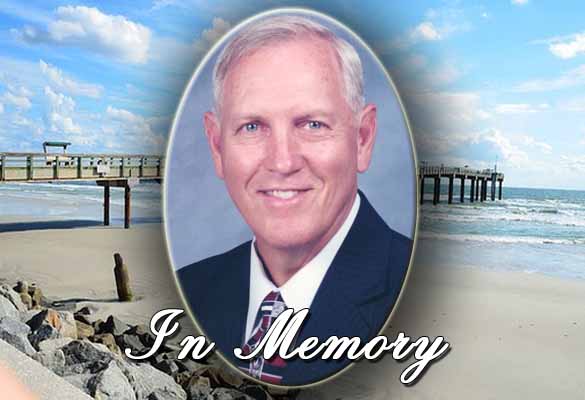- Monday, 5 January 2026
- Have a HOT TIP? Call 704-276-6587 or E-mail us At LH@LincolnHerald.com
Who Were William Hooper, Joseph Hewes & Richard Caswell?
Another article from the SAR and DAR leading up to America's 250th birthday in 2026.

(Photo Sources: William Hooper – Constituting America; Richard Caswell – American Battlefield Trust; and Joseph Hewes - Edenton Historical Commission)
The First Provincial Congress elected three delegates to the First Continental Congress in Philadelphia. These three delegates were witness and party to what would become the origins of self-government within our fledgling nation. They stood in the room and conversed with men we know from history books – George Washington, John Adams, Benjamin Franklin, and Thomas Jefferson. These men were notable in their own right…
William Hooper was born in Boston on 28 June 1742 to a Scottish Episcopal minister and the daughter of one of Boston’s well respected merchant families. At 7 years old, his father had enrolled young William in the Boston Latin School and at 16 was off to Harvard University. After obtaining his Bachelor of Arts degree, he began to study law under James Otis, a “radical” Boston attorney. He passed the bar exam in 1764 and decided to leave Massachusetts. Hooper moved temporarily to Wilmington, North Carolina, where he began to practice law and became the circuit court lawyer for Cape Fear.
Hooper began to build a highly respected reputation in North Carolina among the wealthy farmers as well as fellow lawyers. Hooper increased his influence by representing the colonial government in several court cases. In 1767, Hooper married Anne Clark, the daughter of a wealthy early settler to the region and sheriff of New Hanover County. They had three children: William (b. 1768), Elizabeth (b. 1770), and Thomas (b. 1772). Hooper moved quickly up the ranks, first in 1769 when he was appointed as deputy attorney of the Salisbury District, and then in 1770 when he was appointed deputy Attorney General of North Carolina.
Initially, Hooper supported the British colonial government of North Carolina. As deputy attorney general, in 1768 Hooper worked with Colonial Governor William Tryon to suppress a rebellious group known as the Regulators who participated in the War of the Regulation. Hooper's support of the colonial governments began to erode, causing problems for him because of his past support of Governor Tryon. Hooper had been labeled a Loyalist and therefore he was not immediately accepted by the Patriots. He was elected to the General Assembly in 1773, where he became an opponent to colonial attempts to pass laws that would regulate the provincial courts which helped to sour his reputation among Loyalists. Hooper recognized that independence was likely to occur and mentioned this in a letter to his friend James Iredell, saying that the colonies were "striding fast to independence, and ere long will build an empire upon the ruins of Great Britain." During his time in the assembly Hooper slowly became a supporter of the American Revolution and independence. After the governor disbanded the assembly, Hooper helped to organize a new colonial assembly. Hooper was also appointed to the Committee of Correspondence and Inquiry. Hooper signed the Continental Association and the Declaration of Independence. He died in Hillsboro in 1790 and is laid to rest at the Guilford Courthouse National Military Park in Greensboro.
Joseph Hewes was born in Princeton, New Jersey on 9 July 1730 to a Quaker family. Not much is known of his early life. Some believe that Hewes may have attended the College of New Jersey, known today as Princeton University but there is no record of his attendance. He did, in all probability, attend the grammar school set up by the Stonybrook Quaker Meeting near Princeton. About 1749 or 1750, he moved to Philadelphia and joined Joseph Ogden's mercantile business at Chestnut and 2nd Street as an apprentice. (Ogden was married to his cousin Jemima Hewes.)
Part of his apprenticeship had him traveling by cargo ship either with Ogden or one of his assistants known as a supercargo as they visited Boston, New York, Edenton, Charleston and Tortola in the British Virgin Islands to buy and sell goods to other traders in those port cities. Upon completing his apprenticeship, he determined that opportunities in Edenton offered the best chance for his success. Hewes moved there in late 1754 and with Charles Blount formed "Blount, Hewes and Co." and he soon became Edenton's leading merchant. In a 1772 letter to a friend, James Iredell said of Hewes:
"there is a Gentleman in this Town, who is a very particular favourite of mine, as indeed he is of everybody, for he is one of the best and most agreeable Men in the World. His name is Mr. Hewes. He is a Merchant here and our Member for the Town; indeed the Patron and greatest honour of it. About 6 or 7 years ago he was within a very few days of being married to one of Mr. [Johnston's] sisters who died rather suddenly; and this unhappy Circumstance for a long time embittered every Satisfaction in Life to him. He has continued ever since unmarried...."
In 1757, Hewes was appointed justice of the peace for Edenton. In 1760, he was elected to the North Carolina Assembly, where he served on important committees involving finance and treasury. He remained in the Assembly until 1775. At some point, he left the Quaker tradition and according to the records of St. Paul's Anglican Church in Edenton, he served as a vestryman (church council).
In 1763, "Blount, Hewes and Co.", was dissolved. Hewes joined with a local attorney, Robert Smith, to form "Hewes and Smith." In addition to the store at the NE corner of Main and King, the firm possessed "offices, three warehouses, a wharf and five ships, three sloops and two brigs." Hewes was also the personal owner of a ship repair and ship building yard at the mouth of Pembroke Creek. In 1777, Hewes created a rope walk—a factory for braiding ropes, twine, hawsers and cables to be used in the rigging of ships. It became one of the main suppliers of high quality ropes and lines to the American shipping industry during the next decade.
Hewes had signed the Declaration of Independence but would never see the country as an independent nation. He died on 10 November 1779 and is buried at the Christ Church Burial Ground in Philadelphia, Pennsylvania with three other signers of the Declaration of Independence including Benjamin Franklin.
Richard Caswell was born on 3 August 1729 in Baltimore, Maryland as one of eleven children to Richard and Christian Caswell. The family moved to New Bern in 1745. He was appointed deputy surveyor for the province in 1750. While a member of the House of Burgesses, a position he held for 17 years, Caswell introduced a bill establishing the "Town of Kingston" (which was later changed to Kinston as a result of the American Revolutionary War). Caswell fought the Regulators at Alamance in 1771 during the Regulator Movement, where it is thought he commanded the right wing of Governor Tryon's forces.
Caswell represented North Carolina in both the First and Second Continental Congress. When the militia district of New Bern was formed in 1776, Caswell was appointed to command that minuteman region and led the patriot force at the Battle of Moore's Creek Bridge. In 1780, he was commissioned major general of militia and state troops. At the Battle of Camden Court House in 1780, his troops fled after Virginia militia broke and ran in panic, exposing him to attack without greater defense, leaving the Continentals behind to suffer defeat.
After his defeat at Camden Court House, Caswell returned home with an unnamed illness. In the meantime, the North Carolina General Assembly appointed William Smallwood of Maryland to the command of North Carolina's militia without informing Caswell, so he resigned on October 21, 1780. When Smallwood returned to Maryland in January 1781, the General Assembly once again appointed Caswell major general of militia, and he retained the position until the end of the American Revolution.
Caswell was president of the North Carolina Provincial Congress that wrote the first Constitution of North Carolina in 1776. As the congress adjourned, it elected him acting governor. He took the oath of office on January 16, 1777. Under the new constitution, the General Assembly re-elected him as the first governor in April 1777. Caswell stepped down in 1780, as the state constitution allowed only three consecutive one-year terms to command the militia. He would become the governor again five years later and served from 13 May 1785 to 20 December 1787.
Caswell had eleven children of his own. He was married first to Mary Mackilwean who had 3 children and died in childbirth. A year later, he married Sarah Heritage who delivered eight more children. Caswell's son Richard was colonel of Dobbs Regiment and lieutenant colonel of the 2nd North Carolina Regiment during the Revolutionary War. He was lost at sea in 1784. His son William was also colonel of Dobbs Regiment and brigadier general and in command of New Bern District during the war. Caswell died in Fayetteville, North Carolina, on 10 November 1789. According to tradition, his body was returned to Kinston for burial in the Caswell family cemetery, near where a memorial and museum stands today.

 Jennifer Baker, DAR Vesuvius Furnace
Jennifer Baker, DAR Vesuvius Furnace













